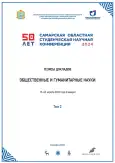Video Game Localization
- Авторы: Tumozov M.A.1
-
Учреждения:
- Samara University
- Выпуск: Том 2 (2024)
- Страницы: 190-190
- Раздел: ЧАСТЬ II. Иностранный язык в области профессиональной коммуникации
- URL: https://gynecology.orscience.ru/osnk-sr2024/article/view/632643
- ID: 632643
Цитировать
Полный текст
Аннотация
Background. Video games continue to gain unprecedented popularity worldwide. Despite English being the dominant language in the gaming industry, only about a third of gamers use English as their primary language for gaming. This trend underscores the growing diversity of the gaming community and highlights the increasing need for comprehensive localization efforts to cater to the vast non-English speaking audience.
Aim. The goal consisted in exploring the differences between localization and translation in the context of video games and providing an insight into the importance of video game localization.
Methods. The set aim was achieved through a combination of online literature review, market research, and practical hands-on experience in video game localization. Market research provided insights into consumer preferences and the impact of localization on video game popularity and player engagement. Hands-on experience came from working directly on the localization of a video game named Blazing Beaks, allowing for a practical understanding of the challenges and rewards of adapting a video game for a different linguistic context.
Results. Localization and translation are often used interchangeably; but translation is just a part of localization. Translation involves converting text or audio from one language to another to ensure that consumers understand the product. Localization includes translation; adjustments to a game’s visuals; content; character names; storylines; and gameplay to align with cultural preferences and legal requirements of target markets. Challenges include adapting to varying display sizes for text due to language differences and ensuring contextual accuracy; as game texts are part of a larger interactive experience. Machine translation proved inadequate for localization tasks due to its inability to grasp non-textual context and cultural nuances effectively. It was found that customers strongly prefer content presented in their own language; regardless of the quality of the localization. Data gathered by analyzing sales of the localized video game showed a great boost in sales and market reach in target countries thanks to positive reception by local influencers.
Conclusions. The differences between video game localization and translation were researched and documented. Video game localization was found to be an effective way to engage local communities and boost market reach.
Ключевые слова
Полный текст
Background. Video games continue to gain unprecedented popularity worldwide. Despite English being the dominant language in the gaming industry, only about a third of gamers use English as their primary language for gaming. This trend underscores the growing diversity of the gaming community and highlights the increasing need for comprehensive localization efforts to cater to the vast non-English speaking audience.
Aim. The goal consisted in exploring the differences between localization and translation in the context of video games and providing an insight into the importance of video game localization.
Methods. The set aim was achieved through a combination of online literature review, market research, and practical hands-on experience in video game localization. Market research provided insights into consumer preferences and the impact of localization on video game popularity and player engagement. Hands-on experience came from working directly on the localization of a video game named Blazing Beaks, allowing for a practical understanding of the challenges and rewards of adapting a video game for a different linguistic context.
Results. Localization and translation are often used interchangeably; but translation is just a part of localization. Translation involves converting text or audio from one language to another to ensure that consumers understand the product. Localization includes translation; adjustments to a game’s visuals; content; character names; storylines; and gameplay to align with cultural preferences and legal requirements of target markets. Challenges include adapting to varying display sizes for text due to language differences and ensuring contextual accuracy; as game texts are part of a larger interactive experience. Machine translation proved inadequate for localization tasks due to its inability to grasp non-textual context and cultural nuances effectively. It was found that customers strongly prefer content presented in their own language; regardless of the quality of the localization. Data gathered by analyzing sales of the localized video game showed a great boost in sales and market reach in target countries thanks to positive reception by local influencers.
Conclusions. The differences between video game localization and translation were researched and documented. Video game localization was found to be an effective way to engage local communities and boost market reach.
Об авторах
Maksim A. Tumozov
Samara University
Автор, ответственный за переписку.
Email: maksimtumozov@gmail.com
student, group 6106-010302D, Informatics and Cybernetics Institute
Россия, SamaraДополнительные файлы






